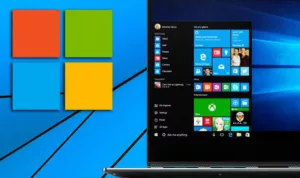Windows 10 PRO Edition
Windows 10 Home Edition
Windows 10 Education Edition
Windows 10 Enterprise Edition
Windows 10 review
Windows 10 FAQ
What is Windows 10?
Windows 10 is the latest version. of the Windows operating system developed by Microsoft. It provides a more experience with a range of new and improved features.
How much does Windows 10 cost?
The cost of Windows 10 depends on the edition and licensing model. The Home edition costs around $139, while the Pro edition costs around $199. Enterprise and Education editions are available through volume licensing.
Can I upgrade to Windows 10 from an older version of Windows?
Yes, you can upgrade to Windows 10 from Windows 7, Windows 8, or Windows 8.1. Microsoft provides a free upgrade offer for users of these older versions of Windows.
What are the system requirements for Windows 10?
The least system requirements for Windows 10 include a 1 GHz processor, 1 GB of RAM (for 32-bit), or 2 GB of RAM (for 64-bit). and 16 GB of hard disk space (for 32-bit) or 20 GB of hard disk space (for 64-bit).
How do I activate Windows 10?
To activate Windows 10, you need to enter a valid product key. You can buy a product key from Microsoft or a licensed retailer. or use the free upgrade offer if you are upgrading from a previous version of Windows.
Can I still use my old software on Windows 10?
Most older software applications are compatible with Windows 10. but some may not work. You can check with the software vendor to see if their product is compatible with Windows 10.

Best Features of Windows 10
-
Start menu: The Start menu is back in Windows 10. providing users with quick access to their most used apps and content. The new Start menu is a combination of the traditional Start menu and the Live Tiles from Windows 8.
-
Cortana: Cortana is Microsoft’s personal digital assistant and is into Windows 10. It can help users manage their schedules. Search the internet, and perform tasks such as setting reminders. sending emails, and launching applications.
-
Microsoft Edge: Microsoft Edge is a new web browser. that is faster and more secure than its predecessor. Internet Explorer. It includes features such as SmartScreen and InPrivate browsing.
-
Many desktops: Windows 10 supports many desktops. allowing users to organize their work and applications across different virtual desktops. This is particularly useful for users who need to multitask or work on many projects.
-
Windows Hello: Windows Hello is a biometric authentication feature that provides users. with a secure and convenient way to log in to their devices. It uses facial recognition, fingerprint scanning, or iris scanning to authenticate users.
-
Action Center: The Action Center is a central location. for notifications and quick actions in Windows 10. Users can customize the quick actions. to suit their needs and view all their notifications in one place.
-
Continuum: Continuum is a feature that allows Windows 10. to adjust its user interface based on the type of device it is being used on. This is particularly useful for users who switch between tablet and desktop modes.
-
Touch support: Windows 10 includes improved support for touch-based devices. making it more for those who prefer to use touchscreens.
Technical Details & System Requirements
-
Release date: July 29, 2015
-
Latest version: 21H1 (May 2021 Update)
-
Architecture: 32-bit and 64-bit
-
Editions: Home, Pro, Enterprise, Education
-
Processor: 1 GHz or faster processor or SoC
-
RAM: 1 GB for 32-bit or 2 GB for 64-bit
-
Hard disk space: 16 GB for 32-bit or 20 GB for 64-bit
-
Graphics card: DirectX 9 or later with WDDM 1.0 driver
-
Display: 800×600


